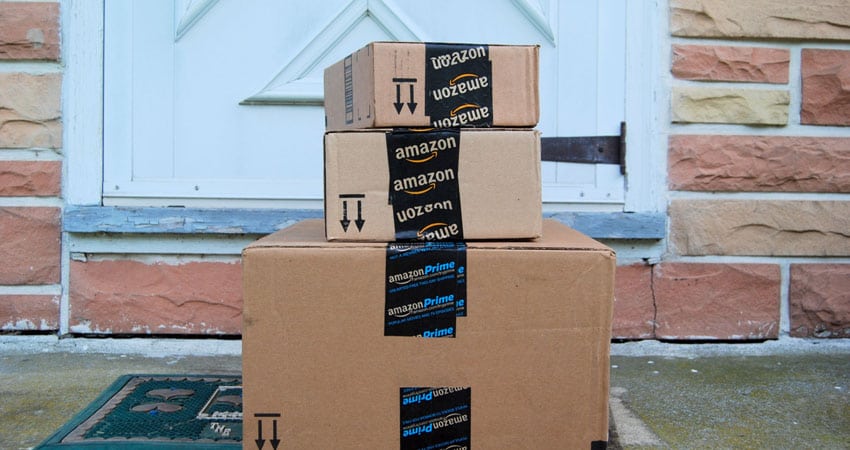If you read the headlines, it seems like 2018 already belongs to Amazon. Not only did online sales surge over the holidays, overwhelming delivery services and closing out 2017 at an all-time high, but this year also started off with the opening of Amazon Go, the first physical store completely devoid of human workers.
Judging by the buzz, it might seem like, yet again, we’re entering the death phase of retail as we’ve known it. But I’m going to call this another false alarm. I grew up in retail, counting jeans in the back of my parents’ denim store and eventually moving into procurement and distribution. Even though I switched gears long ago to design software for ecommerce, I’m certain that traditional retail isn’t going anywhere, any time soon.
But it does need to adapt. As the world gets more automated, traditional retailers — even smaller ones — have a major advantage over companies that rely exclusively on algorithms, apps and artificial intelligence. They have human beings. With a little technological backup, that personal touch can become the secret weapon for retailers looking to defend — or even expand — their turf in 2018.
Play up your natural strengths
I recently needed a new needle for my record player. I could have spent hours online sifting through the hundreds of options, and then waited days or weeks to find out whether I’d picked the right one. Instead, the easier route was to just pop into my local record store. Not only is it perfectly situated to satisfy my desire for instant gratification, but I also know the staff will have done their homework on different brands and price points — so I don’t have to.
As a brick-and-mortar retailer, your biggest strength is human interaction: the ability of your staff to provide a better experience than your customers can get online. Often, this opportunity is squandered — who hasn’t had the frustrating experience of flagging down a sales person in a big box store only to find they have nothing useful to say? Your customers already have access to countless products at their fingertips, what they don’t have is someone who can quickly and decisively tell them which ones are right for them — and why.
So what’s the secret to playing up this human advantage? It starts with prioritizing it. Providing excellent customer service means hiring excellent people, and treating them well, which is why we’re starting to see even the most budget-conscious of retailers like Walmart boosting pay for their frontline retail staff and increasing benefits. The payoff is in happier customers and a healthier bottom line.
Ditch the false dichotomy
You might still see a distinction between sales made on your website and in your store — but your customers don’t. The idea that online sales compete with offline is as harmful as it is outdated. In 2018, retailers need to get serious about embracing omnichannel delivery (yes, for real this time). This doesn’t just mean setting up a website and calling it a day, but actively blurring the line between online and offline to encourage multiple touch points to your brand.
For proof that the future of retail won’t see a distinction between online and off, look no further than Alibaba — China’s answer to Amazon — which last year opened Hema, a line of high-tech supermarkets. Unlike Amazon’s unmanned experiments in convenience stores, Hema has human staff on hand to stock shelves and help customers, but the buying is done through a mobile app, which remembers your purchase history, makes recommendations and can even be used to order groceries for delivery.
But traditional retailers hoping to play this game don’t have to overhaul their entire operations. Something as simple as a computer kiosk in your store or an iPad at checkout can have an impact—bringing the endless aisle of the internet to your physical locations. Conversely, posting real-time information on inventory on your website, and even allowing people to reserve in-demand products, can draw more people into your store.
And don’t forget good old-fashioned email. The original form of online marketing is still the most effective, so, at the least, ask for customers’ email addresses at checkout.
Innovate to reward what works
Back when all sales took place in person, commission was an easy way to reward staff. These days, giving credit for sales that take place through multiple channels is much more complicated. Systems for tracking customers’ every interaction with your company on the way to a sale aren’t yet widely available or affordable for smaller retailers. But strong web sales in a particular geographic area likely correspond to positive interactions with staff at local stores, and retailers need to recalibrate their reward systems to reflect that — say, paying commission on a regional, rather than per-person or per-store basis.
Another challenge facing retailers today lies in translating the treasure trove of customer data collected online into a next-level personalized experience in store. What good is tracking information like someone’s penchant for Nike high tops, or the fact that they’ve already spent $3,000 on your online store, if your in-person retail associates can’t access it?
Technologies that allow frontline staff access to customer histories are coming online, like Salesfloor, an app that enables sales associates to view customer profiles, purchase history and preferences and follow up in person or online. But simpler solutions, such as custom ecommerce software that ensures your point of sale systems in-store and your website are talking to one another, can go a long way in bridging that information gap.
With store closures continuing to rock the retail world, there’s no doubt the industry is in a time of profound change and not everyone will survive. But for those that do, the future lies in embracing technology to bolster retail’s traditional strengths. The human touch, enhanced by technology, makes for an advantage that even Amazon may find hard to match.
Ben Crudo is the CEO of diff

